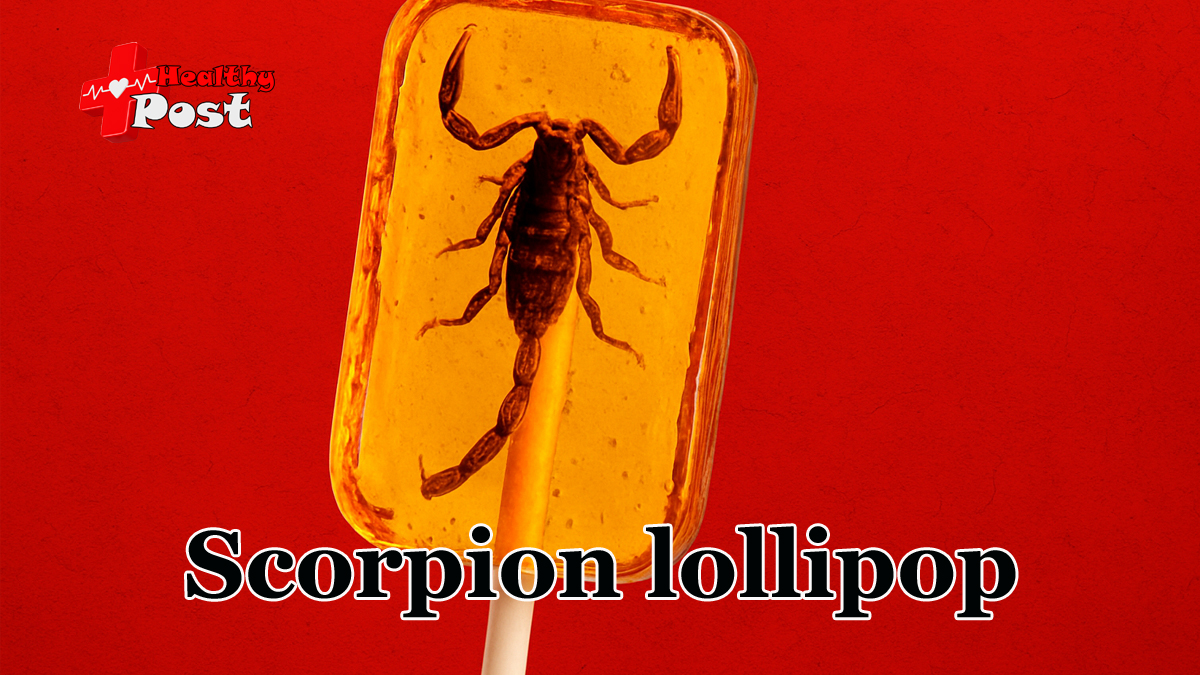
The Truth About Scorpion Lollipops: 7 Dangers You Need to Know
When you first hear about a scorpion lollipop, it sounds like something straight out of a dare game or a reality TV show challenge. A candy with an actual scorpion inside? Some people call it exotic, adventurous, or even a cool gift. But before you even think about trying one or giving it to someone, it’s important to understand the risks behind this bizarre treat.
In this article, we’ll uncover 7 dangers of scorpion lollipops you probably haven’t thought about. By the end, you’ll know exactly what makes them risky, whether they’re safe to eat, and what smarter choices you can make instead.
1. Risk of Allergic Reactions
Even though scorpions are cooked and preserved before being placed in a scorpion lollipop, they can still trigger allergic reactions in some people.
- People with shellfish allergies may react to scorpion proteins because they share similarities with shrimp, crab, or lobster.
- Symptoms can range from mild (itchiness, hives) to severe (difficulty breathing, swelling, anaphylaxis).
💡 Example: Imagine gifting a scorpion lollipop as a gag gift to a friend without knowing they have shellfish allergies. What started as a funny surprise could quickly turn into a medical emergency.
2. Food Safety Concerns
The idea of eating an insect might seem adventurous, but food safety standards vary greatly depending on where scorpion candies are made.
- Not all manufacturers follow strict hygiene protocols.
- If improperly handled, the scorpion could harbor bacteria or contaminants.
- Imported candies might not meet the same safety regulations as food produced locally.
📊 Table: Potential Safety Risks of Scorpion Lollipops
| Risk Factor | Why It’s Dangerous | Who’s at Risk |
|---|---|---|
| Poor hygiene standards | Bacteria contamination | Anyone consuming them |
| Improper preservation | Spoilage or foodborne illness | Children, elderly |
| Unknown source | Lack of regulatory oversight | All consumers |
When it comes to what you eat, uncertainty is never a good thing.
3. Danger of Choking
At first glance, a scorpion lollipop looks just like candy on a stick. But inside, it’s far from ordinary.
- The hard exoskeleton of the scorpion doesn’t break down easily.
- Small sharp parts, like claws or stingers, can break off and become a choking hazard.
- Kids and even adults may accidentally swallow sharp pieces while sucking on the candy.
⚠️ Many novelty candy makers warn against giving these lollipops to children under 12—but not everyone reads the fine print.
4. Risk of Stings (If Improperly Prepared)
You might assume that a scorpion inside candy is completely harmless, but that’s not always the case.
- Venom is usually neutralized by cooking, but if not heated properly, traces may remain.
- The stinger, even without venom, can be sharp and cause injury to the mouth or gums.
- Poorly prepared products from unregulated sellers pose a higher risk.
👉 It’s rare, but not impossible, for people to experience mild stinging sensations after biting into poorly processed scorpions.
5. Psychological Discomfort
Not all dangers are physical—some are emotional. Eating a scorpion lollipop can be deeply unsettling for many people.
- Some may feel disgust, nausea, or guilt while eating an insect.
- Children may be scared or even traumatized if pressured into trying one.
- People with phobias of insects may experience anxiety or panic attacks.
Realistically, a treat should bring joy—not stress. If a candy makes you uncomfortable or anxious, it’s probably not worth it.
6. False Sense of Adventure
Many people buy a scorpion lollipop because it seems adventurous or daring. But in reality, it’s more of a marketing gimmick than a true cultural experience.
- Real insect cuisine in countries like Thailand or Mexico involves freshly prepared dishes, not candy novelties.
- Eating a scorpion in candy doesn’t give you the authentic experience—it just exposes you to unnecessary risks.
- The “wow” factor is usually short-lived, while the dangers linger.
💭 Ask yourself: Is eating a scorpion inside a lollipop really about adventure, or is it just shock value?
7. Impact on Health-Conscious Choices
In a world where people are becoming more health-conscious, eating a scorpion lollipop doesn’t exactly fit into a wellness lifestyle.
- The candy itself is full of sugar, artificial flavors, and preservatives.
- The scorpion adds no real nutritional value—it’s more gimmick than superfood.
- Over time, indulging in these types of novelty sweets can reinforce unhealthy eating habits.
If you’re serious about adventurous eating, there are healthier ways to try edible insects, like cricket protein bars or roasted mealworms, which actually provide nutrients.
Alternatives to Scorpion Lollipops
If you love the idea of adventurous snacks but want to skip the risks, here are safer and healthier options:
- ✅ Cricket chips or protein bars – crunchy, high in protein, and widely available.
- ✅ Chocolate-covered ants or grasshoppers – a more regulated way to try insect-based snacks.
- ✅ Exotic fruits or rare chocolates – adventurous without the hidden dangers.
These options let you explore new flavors without gambling with your health.
Final Thoughts: Should You Try a Scorpion Lollipop?
At the end of the day, a scorpion lollipop may look cool on social media or at a party, but it comes with real risks—from allergic reactions to choking hazards and questionable food safety.
Life is full of fun and adventurous foods to try, but you don’t need to compromise your health for the sake of shock value. If you’re curious about eating insects, there are safer, more nutritious alternatives that let you experience the adventure without the danger.
So before you take a bite, remember: the truth about scorpion lollipops is that they’re more risk than reward. Choose wisely, and your body will thank you.


One thought on “The Truth About Scorpion Lollipops: 7 Dangers You Need to Know”